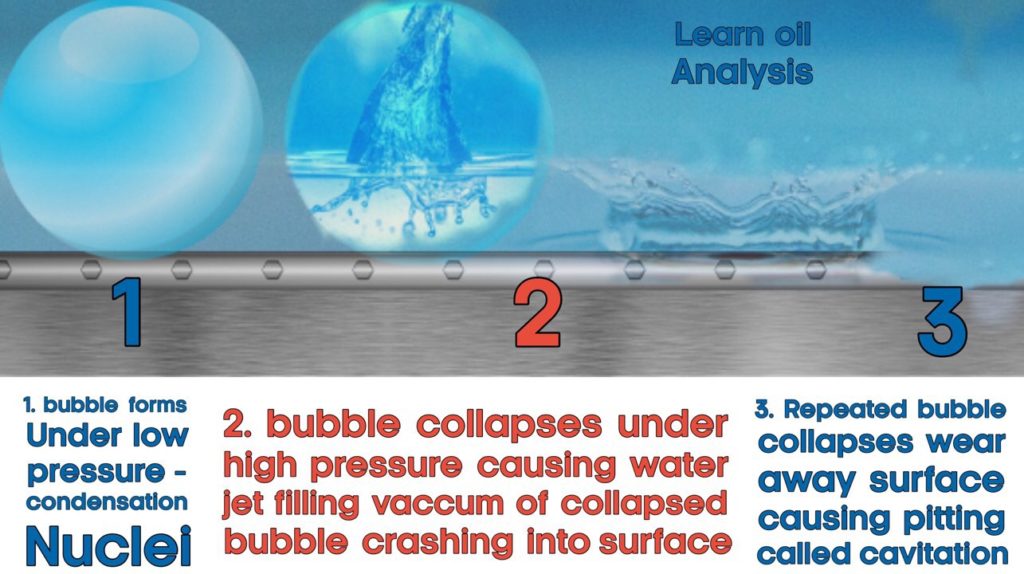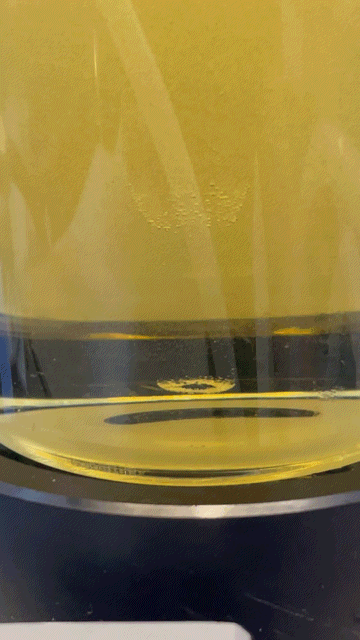
We often talk about dirty oil or wet oil. We measure these contaminants routinely on your oil analysis and nobody questions it as necessary. However, did you know there is a 3rd contaminant that labs hardly ever measure. It’s just as ubiquitous as dirt and water and you can find it everywhere. In fact I know you are surrounded by it right at this moment whilst reading this. That substance is air.
Air as far as your lubricant is concerned is a contaminant just like dirt or water. It can cause wear and often more severe problems than dirt and water. So I thought it was about time I wrote an article on the subject of air contamination in your oil.
Why is air a problem?
Air is ultimately a huge problem for your machinery. Approximately 3% to 10% of your oil volume is dissolved or suspended air bubbles. If this rises this can have a number of severe consequences. Namely:
- Increased wear – air is a poor lubricant and the more of your oil is in fact air your components will wear more as a result.
- Poor compression – air is compressible which means in hydraulic components you can poorly controlled movements. If this is a braking or steering component this can also be a safety issue too.
- Poor travel – lubricants that rely on adhesion to components, penetration by density or splash lubrication can through restricted mobility from the high air content fail to reach critical components. Think of your oil droplet like a balloon. If you try throwing an empty balloon, followed by a water balloon followed by an air inflated one you will release the liquid operates very differently when full of air. At high speeds the way your lubricant clings or travels will be very different with higher air inside of it.
- Air lock – you may be familiar with this problem in your house radiators, well a similar scenario can happen in your oil flow pathways.
- Oil degradation – the more exposure your oil has to oxygen the more it will oxidise and the higher the likelihood of the fluid degrading quickly and needing changing sooner.
- Micro-dieseling – this can lead to burning and sooting of the oil and premature failure of the oil.
- Foaming – at about 25% air entrainment the oil has a serious risk of foaming. This can be a cosmetic issue, but can also be a safety one as foaming oil takes up more space than none foaming oil. This can bring oil closer to potentially ignition sources and also form common slips and trips hazards. The foam can also lead to wear of components as foam is a very poor lubricant.
- Overheating – air is a much poorer conductor of heat than your oil. This is true of most liquids and I recall when learning to scuba dive being told you lose heat 25 x faster in air. Most people could probably quite happily stand outside at near freezing temperatures for 10 minutes but try having an ice bath that long and you will see that is no very easy. The same is true for very hot conditions too.
- Reduced effective oil level – as foam is a poor lubricant its expansion steals oil from beneath the foam resulting in a reduced oil level.
- Cavitation and pinhole corrosion – air bubbles when they expand and contract form microscopic explosions on surfaces of components removing a microscopic amount of surface material. Over time can remove enough surface material to form a cavity. An example of this is shown in the image below inside a pump with cavitation and the process in which it occurs.


In summary is air in my oil an issue?
So overall it is literally better out than in when it comes to air in your oil. Now that doesn’t mean a new process of burping oil barrels, but does mean there are some new tests you should be aware of to first of all see if you have a gas problem with your lubricant.

So how do I know I have got really bad gas problem (in my lube oil)?
There are two tests the lab can perform to assess this – foaming tendency and air release. I already have covered articles on foaming before including traditional foaming and our exclusive H-FOAM test add on to your foaming tendency analysis here.
Air release
Air release works by measuring the time an extremely aerated oil takes to release that gas. Since air is less dense than oil, the density of an aerated oil is less than a non-aerated one. Hence the process involves measuring the time for the density of the oil to return to within 0.2% of the original value. The longer it takes the poorer the oil is at releasing air from it.
How does air release work?
180ml of oil is added to a special piece of glassware that has a water warming jacket and an air inlet and outlet ports.
The density of this oil is measured at the agreed temperature for the test as a starting point.
The oil can be at several temperatures between 25’c and 75’C as agreed with the client, but it is common to use 50’C as the temperature for the test.

At the end of 10 minutes of air being pumped through the density will be a lot less than the start. As the air releases the density will increase back to normal. This is measured continuously until it returns to within 0.2% of the original sample density at the test temperature.
What’s a normal air release time?
Typically you want the oil to have returned to normal within 10 minutes, but some manufacturers have even tighter limits as much as 5 minutes. A typical turbine oil will have a new oil air release between 3 and 6 minutes.
Why might an air release rise over time?
Usually contamination or oil degradation are the most common causes, but it can also be wrong lubricant choice too.
How do I find out more?
You can find out more by clicking the contact us button in blue on the bottom right of this screen.


